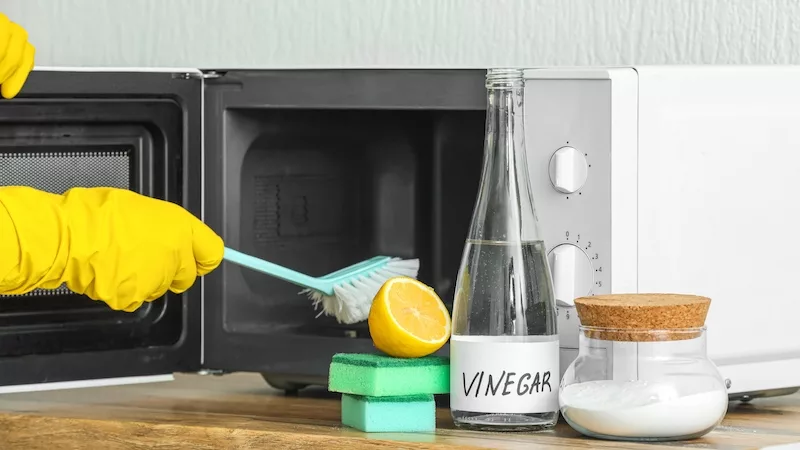The humble microwave sits in the heart of most kitchens, working hard and fast to keep life moving.
But like every well-used tool, it needs care if it’s to stay safe, hygienic and efficient.
Rachel Gordon, Food Safety Researcher at High Speed Training, says keeping it clean is more than just a matter of looks.
“A clean microwave is not just about appearance.
“Built-up food splatters can harbour harmful bacteria, create unpleasant odours that transfer to food, and in some cases, can even become a fire hazard,” she explains.
“Regular cleaning is a simple but non-negotiable step to ensure the food you heat or cook is safe for consumption.”
That care can make a surprising difference.
A dirty microwave can be a breeding ground for bacteria, risking cross-contamination and food poisoning.
It can also mask smells, lower your food hygiene rating if you’re running a business, and shorten the life of your appliance.
Rachel says the golden rule is to wipe down the inside after every use and deal with spills straight away before they harden.
And when you need to give it a deeper clean, you don’t need fancy products.
Fill a microwave-safe jug with water, squeeze in the juice of half a lemon and drop in the skins.
If you prefer, swap the lemon for baking soda, white vinegar or a few drops of dish soap.
Heat it on high for five minutes so the steam loosens any dried-on splashes.
Leave the door closed for another five, then wipe down the inside and wash the turntable in warm, soapy water.
It’s a method that’s cheap, quick and easy and it works.
Rachel adds a few extra tips for keeping your microwave in top shape.
“Use a cover to catch splatters, give the outside a clean too, especially the handle and buttons and be mindful of strong-smelling foods in shared kitchens,” she says.
“Consistent, small cleaning actions are the key to maintaining a hygienic and pleasant-to-use appliance.”
It’s the kind of advice that works whether you’re running a busy commercial kitchen or just heating last night’s leftovers at home.
And it’s proof that when it comes to food safety, a little regular care goes a very long way.





